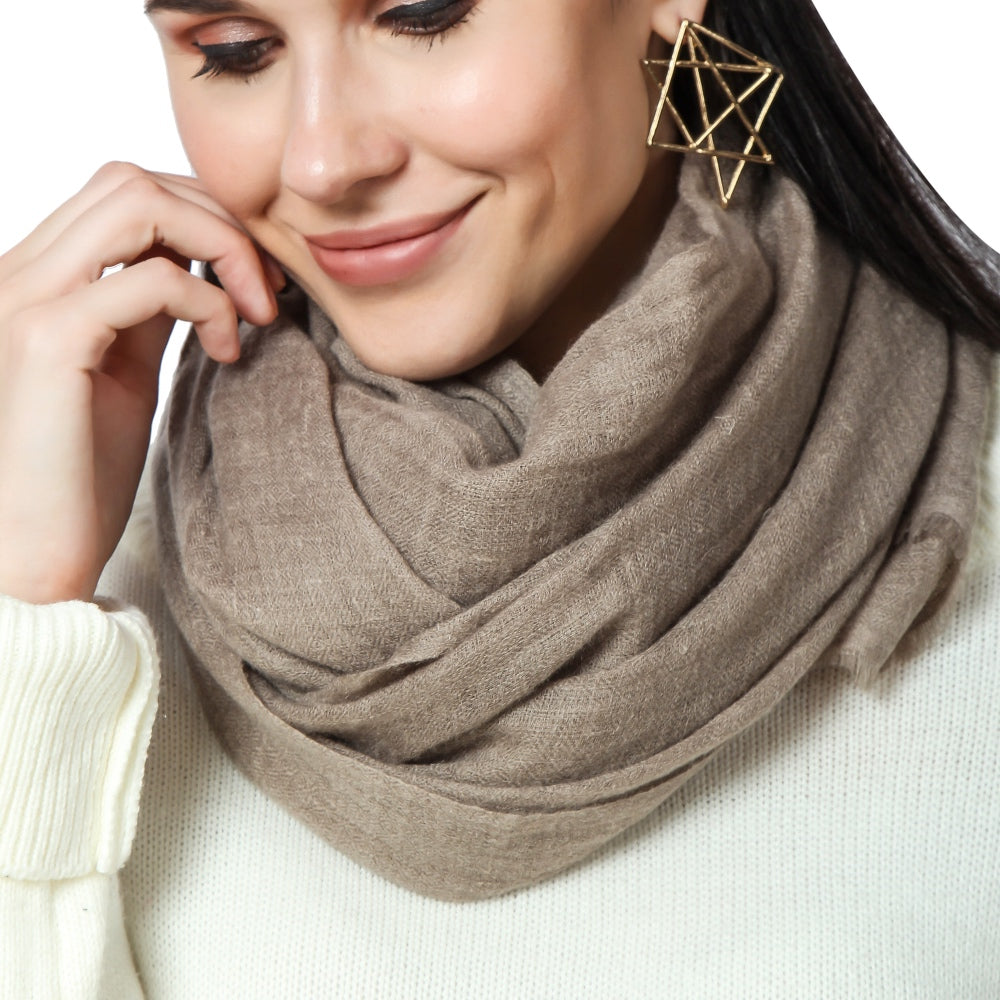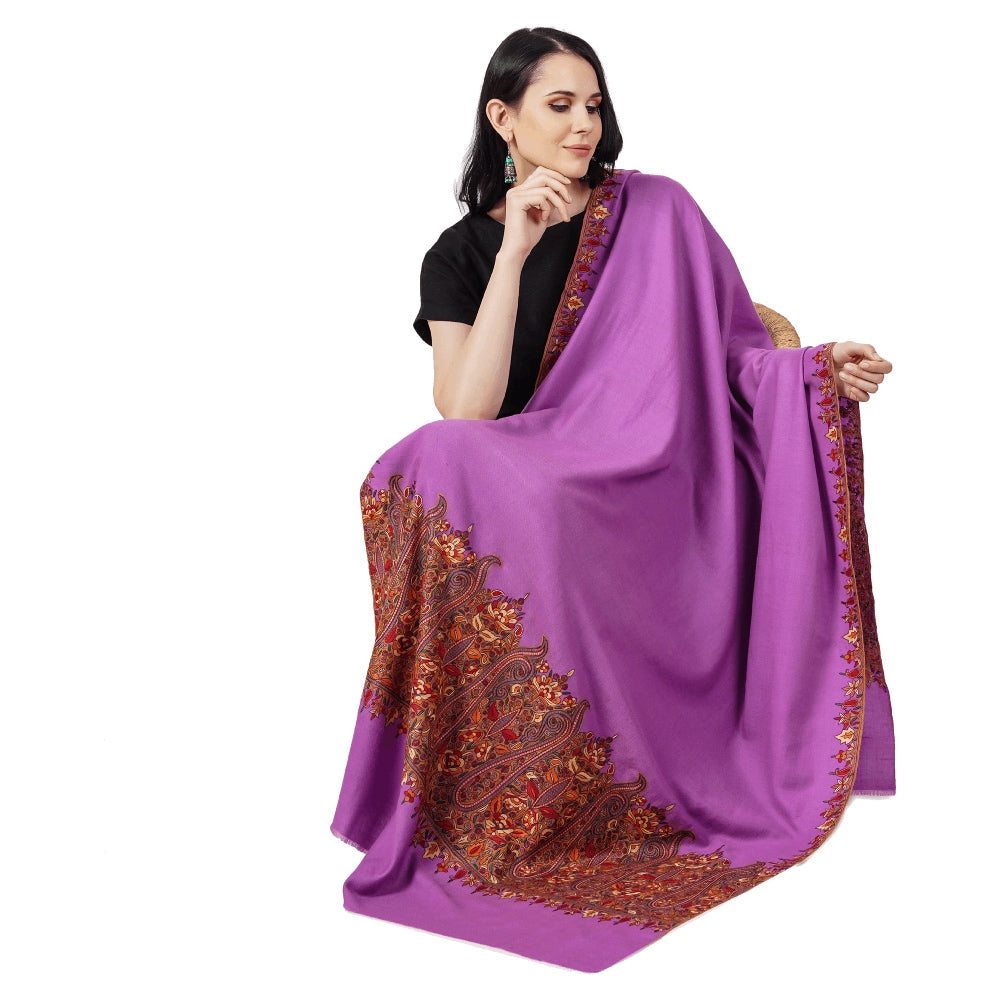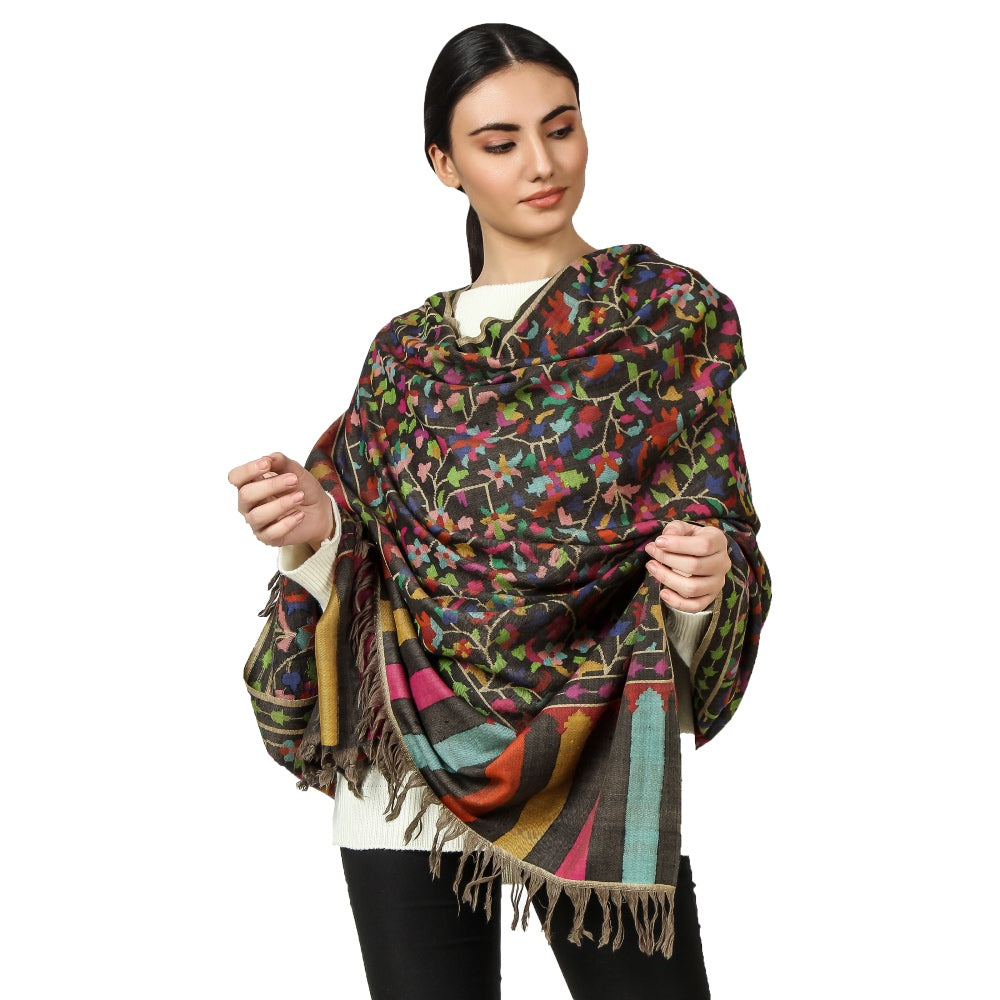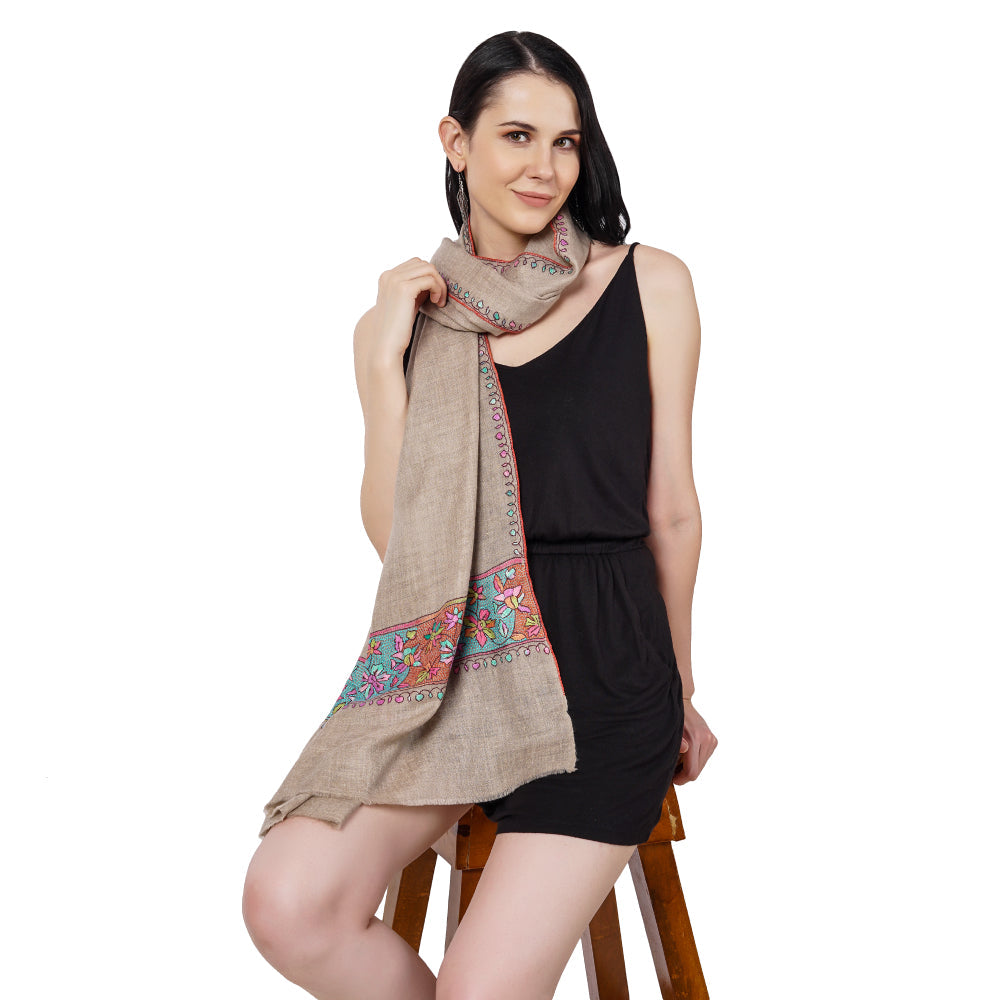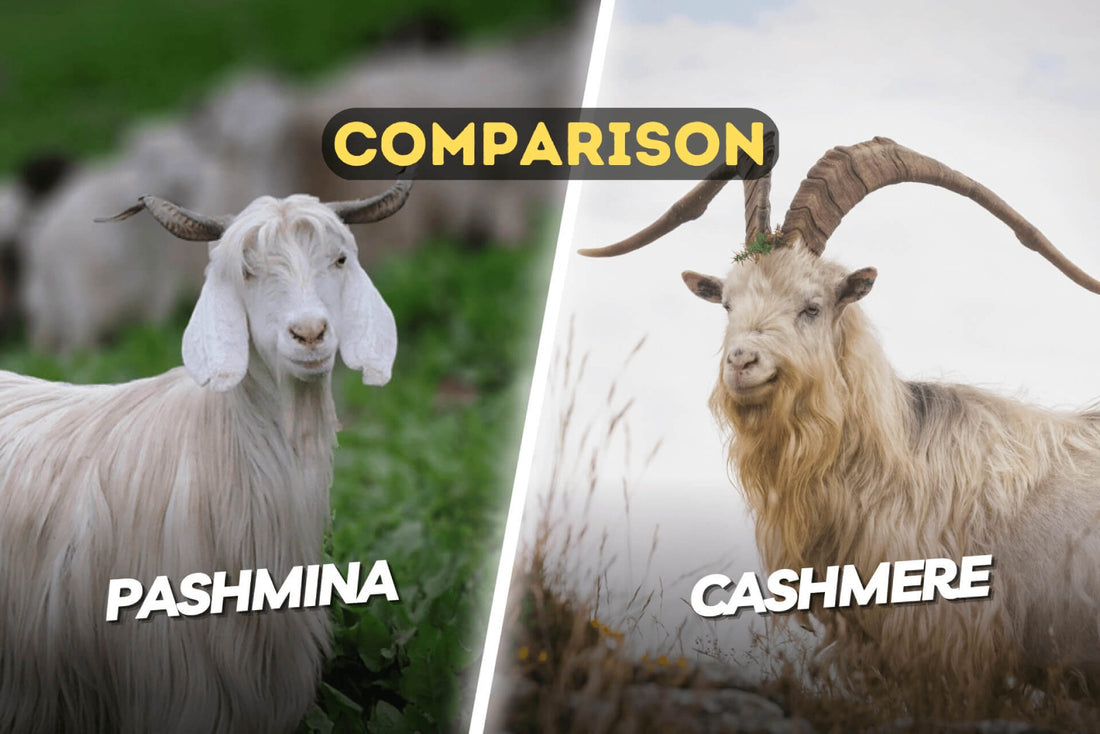
Is Pashmina and Cashmere the Same?
Share
If you're someone who loves luxury textiles, you've likely heard of both Pashmina and cashmere. Both materials are known for their softness, warmth, and durability, and are often associated with high-end fashion and accessories. However, many people wonder if these two materials are actually the same thing. In this blog post, we'll take a closer look at what cashmere and Pashmina are, and explore the similarities and differences between them.
What is Cashmere?

Cashmere is a type of wool that comes from the undercoat of cashmere goats. These goats are primarily found in the regions of India, Tibet, and China. The undercoat is combed out during the spring molt and then spun into yarn. Cashmere wool is known for its softness and warmth, and is highly sought-after for use in clothing, blankets, and other textiles.
One of the key qualities that makes cashmere so desirable is its fine fiber diameter. Cashmere fibers are typically around 14-19 microns in diameter, which makes them much thinner than the fibers of other types of wool (which can range from 20-40 microns in diameter). This fine fiber diameter gives cashmere its distinctive softness and luxurious feel.
Aslo read: How to tell if the Cashmere is real
What is Pashmina?

Pashmina is a type of wool that comes from the undercoat of a specific breed of goat - the Changthangi goat - which is found in the Ladakh region of Kashmir. The word "Pashmina" comes from the Persian word "pashm," which means "soft gold." Pashmina wool is known for its incredible softness, warmth, and lightness, and is highly prized for use in shawls, scarves, and other textiles.
Like cashmere, Pashmina wool is also known for its fine fiber diameter. However, the fibers of Pashmina wool are even finer than those of cashmere - typically around 12-16 microns in diameter. This makes Pashmina even softer and more delicate than cashmere.
Differences Between Cashmere and Pashmina
While cashmere and Pashmina have many similarities, there are also some key differences between the two materials. Here are some of the most notable differences:
Origin
As mentioned, cashmere wool comes from the undercoat of cashmere goats, which are primarily found in India, Tibet, and China. Pashmina wool, on the other hand, comes from the undercoat of Changthangi goats, which are found exclusively in the Ladakh region of Kashmir.
Also read:History of Pashmina a journey through time
Fiber Diameter

As we've discussed, cashmere fibers are typically around 14-19 microns in diameter, while Pashmina fibers are typically around 12-16 microns in diameter. While this may not seem like a huge difference, it does give Pashmina a slight edge in terms of softness and delicacy.
Texture
While both cashmere and Pashmina are known for their softness, they do have slightly different textures. Cashmere is often described as "buttery" or "creamy," with a slightly thicker feel than Pashmina. Pashmina, on the other hand, is often described as "airy" or "feathery," with an incredibly delicate texture.
Price
Pashmina is often more expensive than cashmere, due in part to its finer fiber diameter and the fact that it comes from a more limited geographic region. However, it's worth noting that not all Pashmina is of equal quality - there are many lower-quality "Pashmina" products on the market that are made from blends of other materials or have been processed using harsh chemicals. If you're interested in purchasing high-quality Pashmina or cashmere products, it's important to do your research and look for reputable brands that use only the finest fibers.
Common Misconceptions About Cashmere and Pashmina
There are a few common misconceptions about cashmere and Pashmina that are worth addressing:
-
Misconception: Pashmina is a type of cashmere.
-
Misconception: All pashmina is of high quality.
-
Misconception: All cashmere is the same.
Not all cashmere is created equal - the quality of the wool can vary depending on the breed of goat, the region it comes from, and the manufacturing process used. When shopping for cashmere products, it's important to look for reputable brands that use only the highest-quality fibers and employ ethical and sustainable manufacturing practices.
How to Identify High-Quality Cashmere and Pashmina Products
If you're interested in purchasing high-quality cashmere or Pashmina products, there are a few things you can look for to ensure that you're getting the best possible quality:
Look for the fiber diameter on the label.
High-quality cashmere and Pashmina products will often list the fiber diameter on the label - this is a good indicator of the quality of the wool. Look for products with fiber diameters of 16 microns or less for Pashmina, and 19 microns or less for cashmere.
Feel the texture of the product.
The texture of the wool can also give you a good idea of its quality. High-quality cashmere and Pashmina will feel incredibly soft and delicate to the touch, with a slightly fuzzy texture.
Check the price.
As we mentioned earlier, Pashmina is often more expensive than cashmere due to its finer fiber diameter and limited geographic region. While price isn't always a perfect indicator of quality, it's worth being wary of products that are significantly cheaper than others on the market.
Conclusion
While cashmere and Pashmina are both types of wool known for their softness, warmth, and durability, they are technically not the same thing. Pashmina comes specifically from Changthangi goats in the Ladakh region of Kashmir, and has a finer fiber diameter and softer texture than cashmere. While Pashmina is often more expensive than cashmere, it's important to be wary of lower-quality "Pashmina" products on the market that may be made from blends of other materials. When shopping for high-quality cashmere or Pashmina products, be sure to look for reputable brands that use only the finest fibers and employ ethical and sustainable manufacturing practices.

